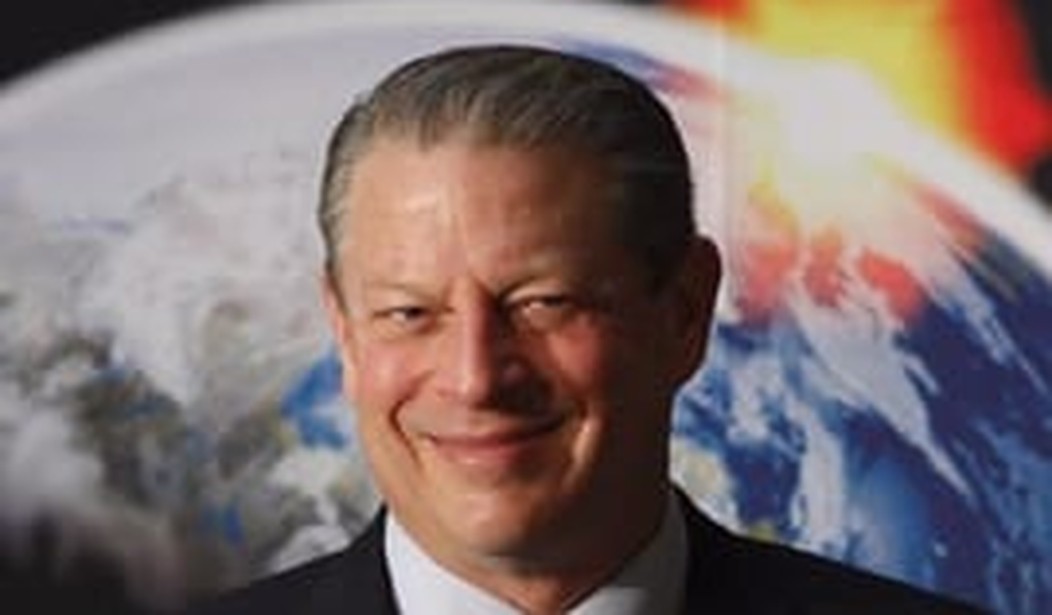For someone supposedly focused on “climate reality,” it is ironic that little of Al Gore’s advocacy bears any meaningful relationship with the world we actually live in.
This point was brought home forcefully in his 24 Hours of Reality — The Cost of Carbon, which was broadcast across the world on October 22-23. Whether it was the science of climate change, climate policy, or the best energy sources to promote in the event of climatic disruption, Gore’s approaches were entirely backwards.
On the science, his project is riddled with mistakes. For example, he says that a rise in carbon dioxide (CO2) causes dangerous global warming. But the geologic record shows the exact opposite: CO2 rises after the planet warms, mainly due to the oceans releasing CO2 held in solution at lower temperatures.
Dr. Madhav L. Khandekar, consultant meteorologist and former research scientist with Environment Canada, adds, “The earth’s climate has not warmed in 17 years according to the UK Met Office. We may not see warming of the climate by more than 0.5 degrees Celsius in next 50 to 100 years.”
“What is being ignored by climate science community is that cold weather has increased world wide, an inconvenience fact that is completely at odds with Al Gore’s claims,” said Khandekar. “No one knows why cold weather has increased in recent years.”
Gore also spoke about supposed increases in heat waves, droughts, and other extreme weather due to CO2-caused warming. This too is backwards. If the world warms due to increasing greenhouse gas emissions, temperatures at high latitudes are forecast to rise the most, reducing the difference between arctic and tropical temperatures. Since this differential drives weather, we should see weaker midlatitude cyclones in a warmer world, and so less extremes in weather, not more.
This is one of the few areas of agreement between the UN Intergovernmental Panel on Climate Change (IPCC) and the Nongovernmental International Panel on Climate Change (NIPCC). In 2012, the IPCC asserted that a relationship between global warming and wildfires, rainfall, storms, hurricanes, and other extreme weather events has not been demonstrated. The most recent NIPCC report (see here) states that “in no case has a convincing relationship been established between warming over the past 100 years and increases in any of these extreme events.”
International Climate Science Coalition (ICSC) Energy Issues Advisor Bryan Leyland of New Zealand said, “Gore says we must focus on reality. Reality says that the world has not warmed for the last 17 years even as carbon dioxide, the gas Gore blames for climate disruption, has risen 8%. Reality says that we are near a record low for hurricanes, and other extreme weather is not generally increasing in severity or frequency.”
ICSC scientists explain here why many of Gore’s other science claims are also nonsense.
Strike one, Mr. Gore.
Regarding what we should do about climate change, the only solution Gore presented in 24 Hours of Reality was to dramatically reduce our emissions of CO2. This will eventually mitigate, or stop, the climate crisis, he told us. Gore said nothing about helping vulnerable populations cope with climate change that we see happening today. When the program’s guests occasionally brought up adaptation, “Reality” hosts usually steered the conversation back to mitigation.
This, too, is backwards. Across the globe, many people suffer and die from extreme weather and, ultimately, dangerous climate change. These phenomena are a normal part of our planet’s dynamic environment, one we must properly adapt to or suffer the consequences. History is littered with examples of societies that failed largely because they could not cope with extreme climate change. A good example was the once prosperous Greenland Viking colonies which perished when the Medieval Warm Period ended in the mid 14th century. Even today, indigenous populations in the Arctic and the Sahel region of Africa experience severe hardship due in part to natural climate change.
Helping people suffering from climate change in the present, however caused, is obviously far more important than helping people yet to be born who may experience climate problems in the future.
Gore is not alone in making this mistake. According to Landscape 2013, a report issued on October 22, 2013 by the San Francisco-based Climate Policy Initiative, only 6% of the approximately 359 billion U.S. dollars spent each year across the world on climate finance goes to helping people adapt to climate change today. The rest goes to trying to stop dangerous man-made global warming that flawed computer simulations forecast may happen decades in the future. This is in direct contradiction to the approach agreed to in Copenhagen, where participants in the 2009 United Nations climate conference committed to a 50-50 funding split between adaptation and mitigation.
Strike two, Mr. Gore.
Gore’s approach to energy policy is equally backwards. If we really were headed for climate disruption, we would need to reinforce buildings and strengthen public infrastructure by building levees, upgrading our irrigation systems, and burying our electrical and communications cables underground. We would need to increasingly relocate populations living on flood plains or at risk from tornadoes and hurricanes. All of this results in an increasing need for vast amounts of inexpensive and reliable energy.
But Gore promotes the least reliable, most expensive energy — wind and solar power. Only a fool demands we stop using coal-fired electricity and other inexpensive, reliable energy sources when faced with possible climate problems.
Strike three, Mr. Gore. You’re out.
Young children and those with vested interests in continuing the climate scare may still support your crusade. But sensible adults of all political and philosophical persuasions are starting to recognize the truth: the climate scare is one of the most expensive hoaxes in the history of science.









Join the conversation as a VIP Member